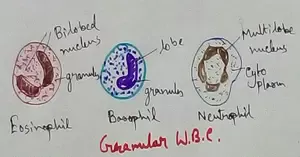Qutub Minar
Inspired by the Minaret of Jam in Western Afghanistan, the Qutub Minar, at 73 meters, is the tallest minaret which is built entirely of bricks. Commissioned by Qutub-ud-Din Aibak in 1193, the Minar was built to commemorate the Muslim dominance in Delhi after the last Hindu emperor died. The tower is the highest of such towers in India and has projecting balconies to add to its illusory magnificence. Out of the total five storeys, the first three storeys are made of red sandstone and the last two are constructed of marble and sandstone. The entire structure has a tapering conical shape which ranges from 15 metre diameter at the base to just 2.5 metre at the top. A second tower was also commissioned near the first one, the base of which is till today evident. However, it never quite took off beyond the base of the tower.
Though Qutub-ud-Din Aibak is regarded as the one who commissioned this construction in 1200 AD, it is also true that he managed to just construct the basement. The next threestoreys were done by his successor Illtutmish and the last two storeys were added by Firoz Shah Tughlaq in 1398. Each of these imperial figures brought their own touch of art and perfection to the grandeur of this imposing tower.
Apart from the MainTower, the complex comprises of the Quwwat-us-Islam Mosque, which is considered to be the first Mosque built on Indian soil and quite provocatively proclaims that the material was gathered from the ruins of 27 Hindu temples, which is evident in the typical Hindu ornamentation used to design this staunch Muslim mosque.
A 7 meter highly resistant to rust Iron Pillar is situated close to the mosque replete with Sanskrit inscriptions and a legendary myth surrounding it that if you can encircle it with your hands with your back touching it, your wish may be granted fulfilment.
Also situatedwithin the premises are the tomb of Illtutmish , Ala’I Darwaza and the Ala’I Minar.
The walls of the Minar have intricate stone carvings which are a true example of Muslim craftsmanship. Overall the intricate detailing, the towering Minaret and the ancientness of this epic structure makes it an incredible tourist attraction, from a historical perspective.
Throughout its history, the Qutub Minar has been struck by the ravages of times and bolts of lightning and survived the greater part of it with the aid of renovations and repair work.
The origins of this Minar is shrouded in controversial mire. While some suggest that it may have epitomized the ultimate dominance of the Muslims over Delhi Empire, others suggest that the minaret was used to call the faithful for prayer. Whatever be the legend, the fact remains that in sheer artistic glory and architectural brilliance, this is one of the prime monuments in India.
The Qutub Minar remains relevant to the Indian culture in modern times with the Qutub festival of Indian Classical music and dance which takes place on the premises every year in the month of October/November. It is a major tourist attraction for its spiral staircases, ruined tombs and monuments.
Recent Articles
-
Formed Elements of Blood | Erythrocytes | ESR |Leukocytes |Neutrophils
Jan 15, 26 01:25 AM
Formed elements formed elements are constitute about 45 % of blood afeias haematocrit value packed cell volume mostly of red blood corpuscles and are of 3 types- erythrocytes, leukocytes and blood pla… -
What Is Plasma? | Blood Plasma | Proteins | Nutrients | Cholesterol
Nov 07, 25 10:29 AM
Blood is a mobile fluid which is a connective tissue and is derived from the mesoderm like cell any other connective tissue. Colour of blood is reddish and that flows inside the blood vessels by means… -
Disorders of Respiratory System | Tuberculosis | Pleurisy | Emphysema
Oct 28, 25 11:39 PM
Tuberculosis is very common disease and is caused by a type of bacteria called Mycobacterium tuberculosis. This disease causes different trouble in the respiration and infection of several parts of th… -
Regulation of Respiration | Respiratory Centres | Inspiratory Area |
Oct 14, 25 12:13 AM
Respiratory Centre is the area that controls the rate of respiration and it is observed to be located in medulla oblongata and pons. Respiratory Centre has the following will dispersed components like… -
Explain Transport of Gases | External Respiration | Tissue Respiration
Oct 09, 25 11:35 PM
In humans gaseous exchange is completed in the following ways the steps are - External Respiration or Breathing - Breathing in false taking in of Oxygen and giving out of carbon dioxide in the body. M…





New! Comments
Have your say about what you just read! Leave me a comment in the box below.